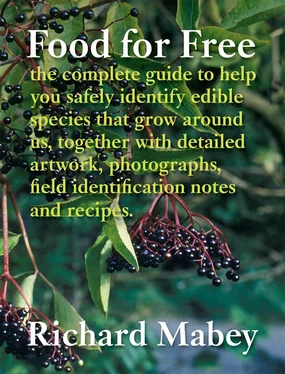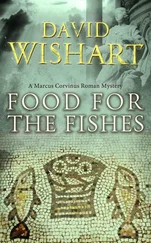Mushroom cutlets with walnut cream sauce
Chop the mushrooms finely, cook in a little butter and drain. Soak 125 g (5 oz) of soft breadcrumbs in milk and squeeze dry. Dice and sauté an onion, beat together two eggs and chop some parsley. Combine all the ingredients, form into cutlets and fry in oil. Finally, chop the walnuts with a little more parsley, blend with cream and season.
© cipolla/Imagebroker/FLPA, © Peter Wilson/FLPA, © Bob Gibbons/FLPA, © Marcus Webb/FLPA

© Justus de Cuveland/Imagebroker/FLPA
Beech Fagus sylvatica Trees Scots Pine Juniper Barberry Hop Walnut Beech Sweet Chestnut Oak Hazel Lime Sloe, Blackthorn Wild Cherry Bullace, Damsons and Wild Plums Crab Apple Rowan, Mountain-ash Wild Service-tree Whitebeam Juneberry Medlar Hawthorn, May-tree Elder Oregon-grape

Widespread and common throughout the British Isles, especially on chalky soils. A stately tree, up to 40 m (130 ft), with smooth grey bark and leaves of a bright, translucent green. Nuts in September and October, four inside a prickly brown husk. When ripe this opens into four lobes, thus liberating the brown, three-sided nuts.
Beech dominates the chalk soils of southern England and is associated with a number of species of fungi. It is a native species, and has long provided a source of fuel, although it did not gain popularity as a material for furniture until the eighteenth century. Since then it has become extremely popular in the kitchen – albeit for building kitchen units rather than for its culinary delights.
However, the botanical name Fagus originates from a Greek word meaning to eat, though in the case of the beech this is likely to have referred to pigs rather than to humans. This is not to say that beechmast – the usual term for the nuts – is disagreeable. Raw, or roasted and salted, it tastes not unlike young walnut. But the nuts are very small, and the collection and peeling of enough to make an acceptable meal is a tiresome business.
This is also an obstacle to the rather more interesting use of beechmast as a source of vegetable oil. Although I have never tried the extraction process myself, mainly because of a lack of suitable equipment, it has been widely used in mainland Europe, particularly in times of economic hardship, such as in Germany between the two World Wars. Although beech trees generally only fruit every three or four years, each tree produces a prodigious quantity of mast, and there is rarely any difficulty in finding enough. It should be gathered as early as possible, before the squirrels have taken it, and before it has had a chance to dry out. The three-faced nuts should be cleaned of any remaining husks, dirt or leaves and then ground, shells and all, in a small oil-mill. (For those with patience, a mincing machine or a strong blender should work as well.) The resulting pulp should be put inside a fine muslin bag and then in a press or under a heavy weight to extract the oil.
For those able to get this far, the results should be worthwhile. Every 500 g (1 lb) of nuts yields as much as 85 ml (3 fl oz) of oil. The oil itself is rich in fats and proteins, and provided it is stored in well-sealed containers it will keep fresh considerably longer than many other vegetable fats. Beechnut oil can be used for salads or for frying, like any other cooking oil. Its most exotic application is probably beechnut butter, which is still made in some rural districts in the USA, and for which there was a patent issued in this country during the reign of George I. In April the young leaves of the beech tree are almost translucent. They shine in the sun from the light passing through them. To touch they are silky, and tear like delicately thin rubber. It is difficult not to want to chew a few as you walk through a beechwood in spring. And, fresh from the tree, they are indeed a fine salad vegetable, as sweet as a mild cabbage though much softer in texture.
Beech-leaf noyau
An unusual way of utilising beech leaves is to make a potent liqueur called beech-leaf noyau. This probably originated in the Chilterns, where large beechwoods were managed in the eighteenth and nineteenth centuries to service the chair-making trade. Pack an earthenware or glass jar about nine-tenths full of young, clean leaves. Pour gin into the jar, pressing the leaves down all the time, until they are just covered. Leave to steep for about a fortnight. Then strain off the gin, which will by now have caught the brilliant green of the leaves. To every 500 ml (1 pint) of gin add about 300 g (12 oz) of sugar (more if you like your liqueurs very syrupy) dissolved in 250 ml (½ pint) of boiling water, and a dash of brandy. Mix the warm syrup with the gin and bottle as soon as cold. The result is a thickish, sweet spirit, mild and slightly oily to taste, like sake.
© Derek Middleton/FLPA
Sweet Chestnut Castanea sativa Trees Scots Pine Juniper Barberry Hop Walnut Beech Sweet Chestnut Oak Hazel Lime Sloe, Blackthorn Wild Cherry Bullace, Damsons and Wild Plums Crab Apple Rowan, Mountain-ash Wild Service-tree Whitebeam Juneberry Medlar Hawthorn, May-tree Elder Oregon-grape
Well distributed throughout England, though scattered in Scotland. Common in woods and parks. A tall, straight tree, up to 30 m (100 ft), with single spear-shaped serrated leaves. Nuts in October and November, two or three carried in spherical green cases covered with long spines.
A nut to get your teeth into. And a harvest to get your hands into, if the year is good and the nuts thick enough on the ground to warrant a small sack rather than a basket. Although the tree was in all probability introduced to this country by the Romans, nothing seems more English than gathering and roasting chestnuts on fine autumn afternoons.
The best chestnut trees are the straight, old ones whose leaves turn brown early. Do not confuse them with horse chestnuts (Aesculus hippocastanum), whose inedible conkers look rather similar to sweet chestnuts inside their spiny husks. In fact the trees are not related, Castanea sativa being more closely related to the oak. They will be covered with the prickly fruit as early as September, and small specimens of the nuts to come will be blown down early in the next month. Ignore them, unless you can find some bright green ones which have just fallen. They are undeveloped and will shrivel within a day or two.
The ripe nuts begin to fall late in October, and can be helped on their way with a few judiciously thrown sticks. Opening the prickly husks can be a painful business, and for the early part of the crop it is as well to take a pair of gloves and some strong boots, the latter for splitting the husks underfoot, the former for extricating the fruits. The polished brown surface of the ripe nuts uncovered by the split husk is positively alluring. You will want to stamp on every husk you see, and rummage down through the leaves and spines to see if the reward is glinting there.
Don’t shy away from eating the nuts raw. If the stringy pith is peeled away as well as the shell, most of their bitterness will go. But roasting transforms them. They take on the sweetness and bulk of some tropical fruit. As is the case with so much else in this book, the excitement lies as much in the rituals of preparation as in the food itself. Chestnut roasting is an institution, rich with associations of smell, and of welcomingly hot coals in cold streets. To do it efficiently at home, slit the skins, and put the nuts in the hot ash of an open fire or close to the red coals – save one, which is put in uncut. When this explodes, the others are ready. The explosion is fairly ferocious, scattering hot shrapnel over the room, so sit well back from the fire and make sure all the other nuts have been slit.
Читать дальше














